|
Wisley's Alpine Log
By Paul Cumbleton
Log 17 14th August 2008
High summer is the most difficult time of year for us as far as flower display is concerned. It is that gentle lull between the riot of spring colour when most alpines are at their stunning best and the once again rich tones of autumn when colour reawakens with the autumn-flowering bulbs. In the display house we try to make up for this by using more foliage plants and others with architectural interest, interspersed with still a few flowers which we always manage to get at least some of at this time of year.
A couple of very dwarf Euonymus are on display at present. The first is Euonymus japonicus 'Hibarimisake', with small, tightly congested leaves with a variegated edge. This plant is just 15 cm tall.

Euonymus japonicus 'Hibarimisake'
Similar is another form, Euonymus japonicus 'Kewensis variegatus' - at least this is what is on the label it came with, but I think that may be a confusion of names. Either way, it makes another tiny shrublet of attractive form
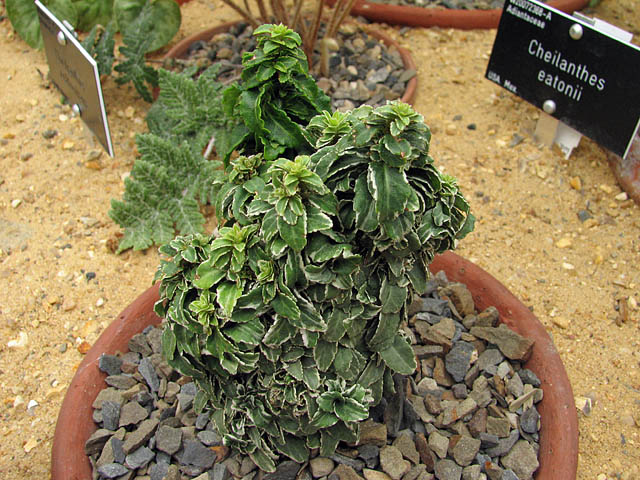
Euonymus japonicus 'Kewensis variegatus'
Also in the house just now is Petrophytum caespitosum. The name "Petrophytum" literally means "rock plant", given for the way it is usually found hugging to rocks in its native ranges of North America.

Petrophytum caespitosum
I was fortunate to see this plant in the wild, in the Ruby Mountains of Nevada where it made extensive mats over limestone rocks.
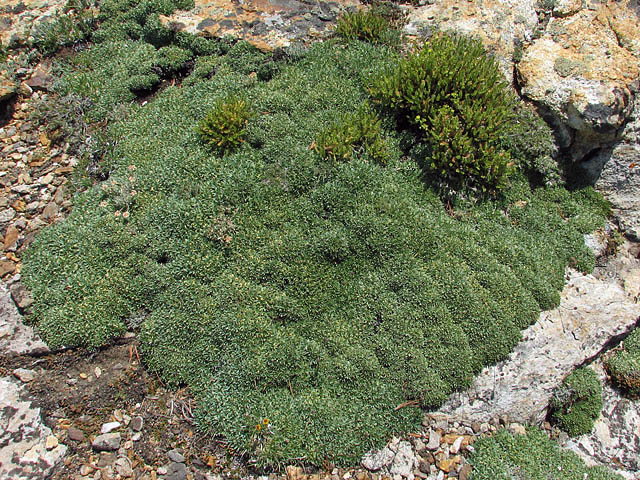
Petrophytum caespitosum in Nevada
Outside there is still some colour around and one delight at the moment are the oenotheras (evening primroses). The dwarf O. caespitosa is an ideal size for rock gardens with the plants only growing to 10 -15 cm, although sometimes when grown from seed, variations may mean some plants do elongate whereas others stay compact. It is easy enough to weed out the less satisfactory ones. Hailing from the north-western parts of the USA, the flowers are bright white and then fade to pink.

Oenothera caespitosa
Moving to the southwestern corner of the USA, the more commonly seen O. macrocarpa has bright, rich yellow flowers at the end of spreading stems that can reach 45cm long
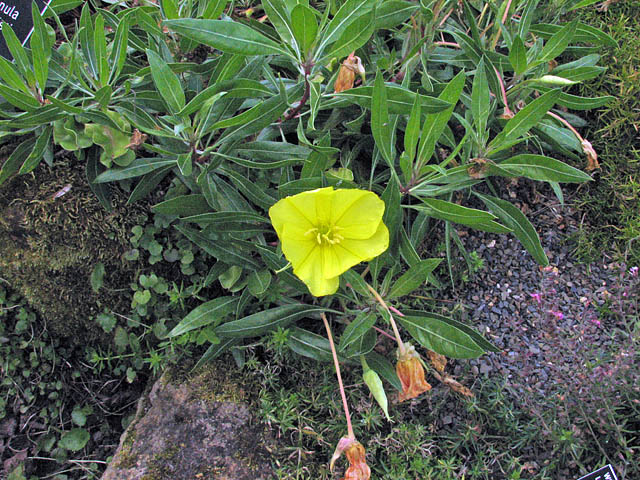
Oenothera macrocarpa
Doing particularly well this year, perhaps because of the cooler, moister summer we have had, are the Roscoea. Until 1994, the known colour range of Roscoea flowers included whites, purples, pinks and yellows. Then, an expedition to the Ganesh Himal in central Nepal in 1994 made an exciting discovery - a form of Roscoea purpurea with bright red flowers. This has been introduced to cultivation with the cultivar name of 'Red Gurkha' and is slowly becoming more available (the current PlantFinder lists three suppliers).
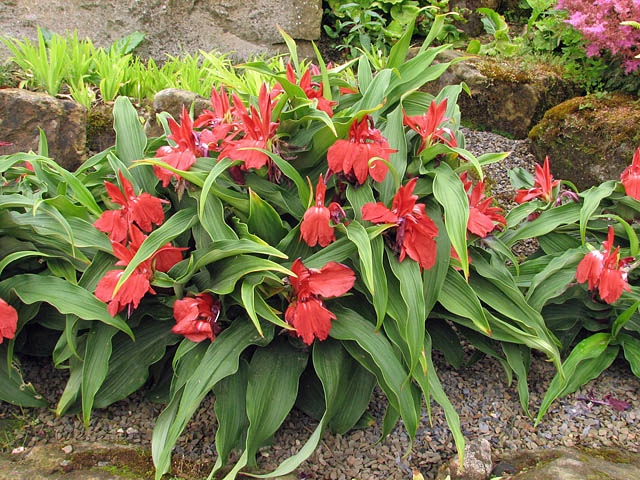
Roscoea purpurea 'Red Gurkha'
There were in fact three somewhat varying clones collected. One of the main differences is that in one clone the stems are plain green while another has purple stems. Strictly, only one of these forms can be called 'Red Gurkha'. I must check with Kew and find out which one actually carries the name.
Roscoeas are often grown in a woodland setting but are also happy in partial sun, or even full sun in cooler parts of the country or where there is a steady supply of moisture. They like plenty of water when growing, but the growing medium must also be well drained as they like to be much drier during their winter dormancy - if they are too wet at this time they will rot off. They can also be grown in containers. The rich colour of 'Red Gurkha' deserves a closer view:

Roscoea purpurea 'Red Gurkha' close up
With more subtle hues, some blue flowered plants are still hanging on. In the small raised bed alongside the display house, Campanula versicolor has done well.
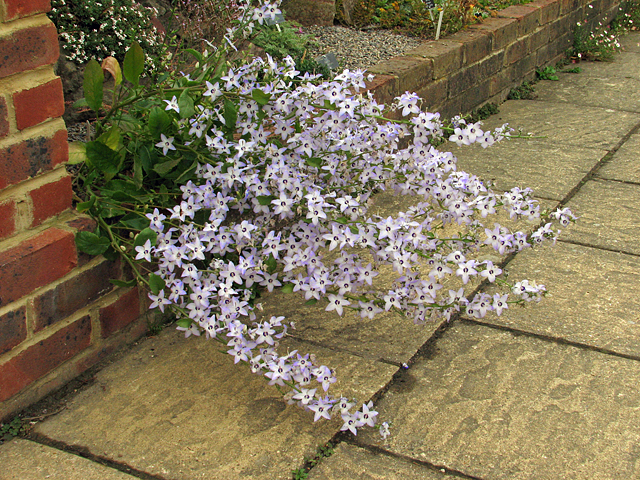
Campanula versicolor
This Campanula needs a sunny spot to do well and may not come through a severe winter. It is still rather uncommon in cultivation but is worth seeking out. The flowers are untypical of most Campanulas and open almost flat or even sometimes recurve backwards a bit. Studies in the wild show that a differing set of insects pollinates this flower compared to all the other campanula species with which it shares its habitat.
Another blue flower out now is Gentiana asclepiadea. This plant seems especially attractive to slugs & snails and we regularly get it eaten almost to the ground if we are late with or forget to take precautions!

Gentiana asclepiadea
One of the horned poppies (so called because of the shape of their long seed pods), Glaucium corniculatum is giving a bright splash of orange. Not exactly an alpine, but can mix well on a larger rock garden bed.

Glaucium corniculatum
Some foliage is also adding colour to the rock garden. Yet to flower, but giving interest with the leaves already is Saxifraga fortunei hybrid 'Conwy Snow'

Saxifraga fortunei hybrid 'Conwy Snow'
We have this in a moist, semi-shaded rock ledge where its white flowers will light up the spot in late autumn.
Finally this week if you range just outside the 'borders' of the alpine department you will come across these curious structures:

Willow sculptures
Earlier in the year the garden ran a series of willow-weaving workshops. These sculptures were created by visitors attending the workshops, which were run by artist Tom Hare. The ones in the picture represent inverted root systems with roots twisting and arching over the gate to the model vegetable gardens.
^ back to the top ^
|

